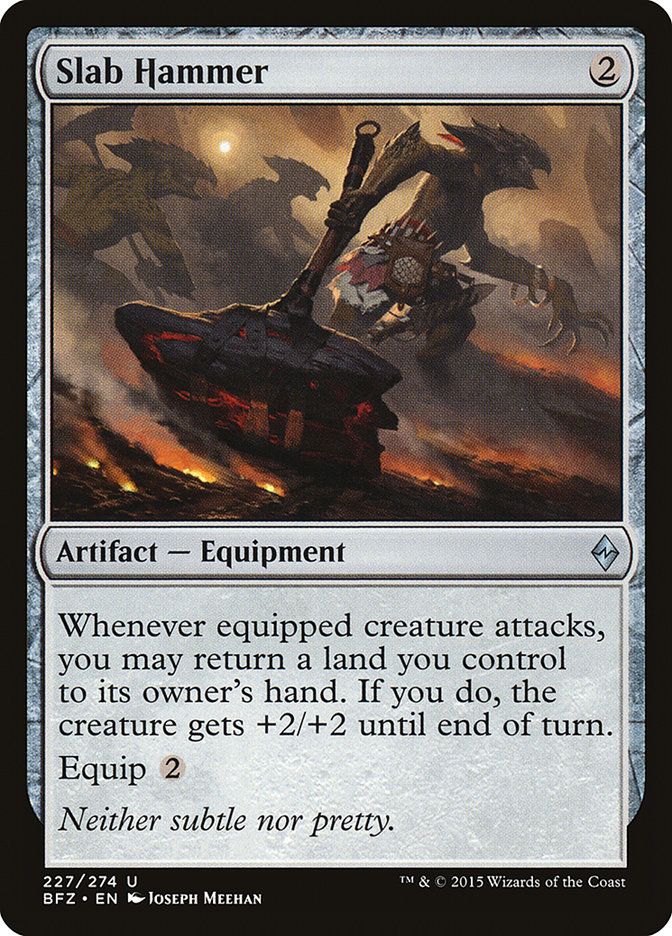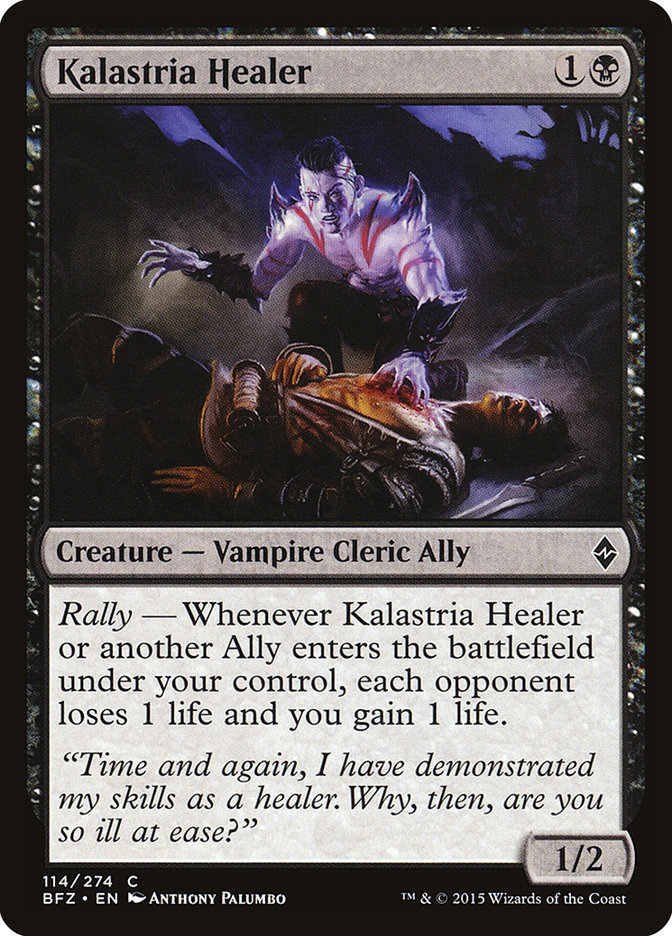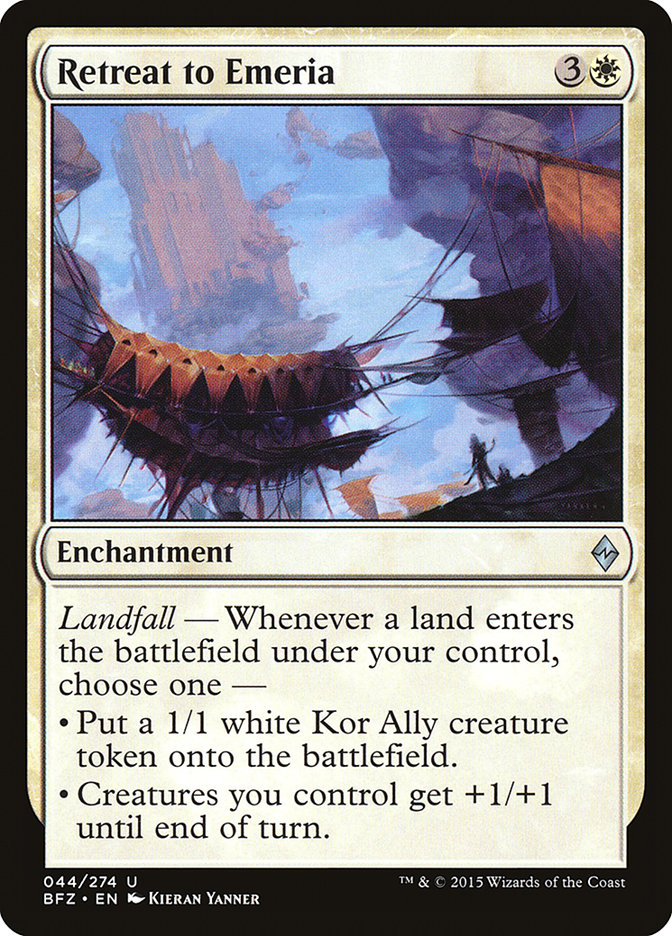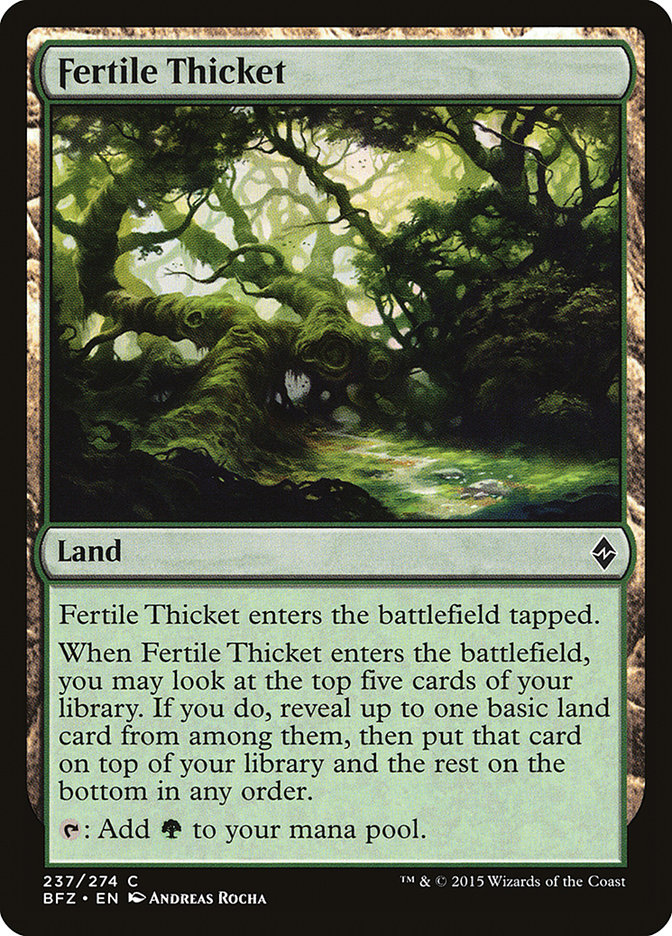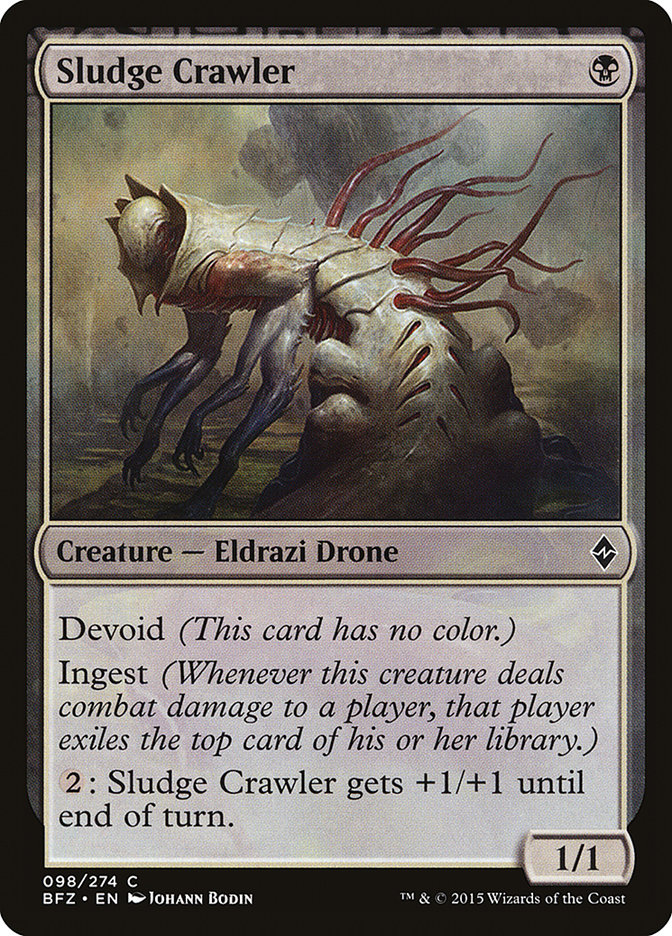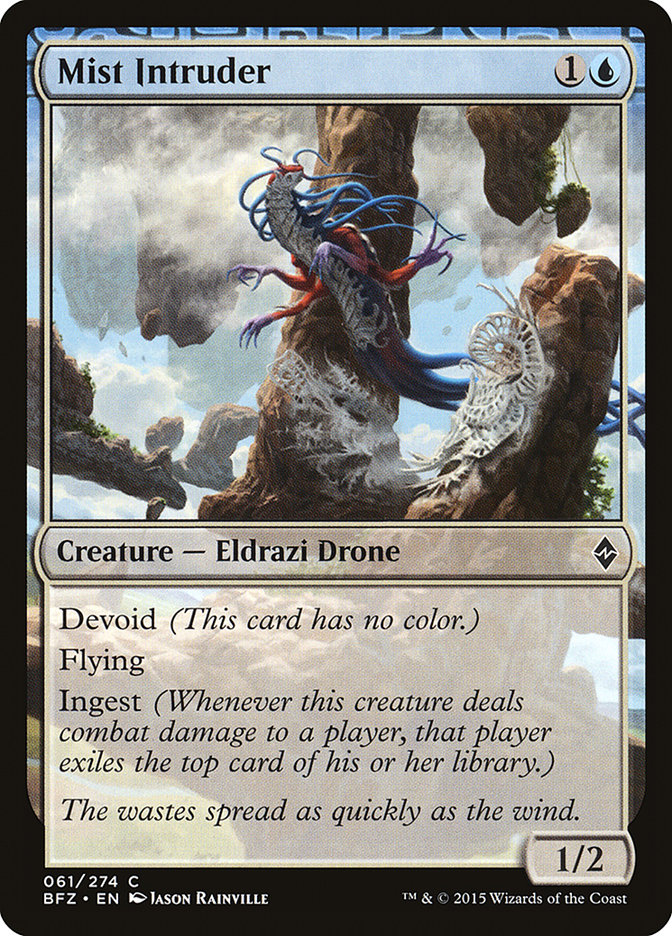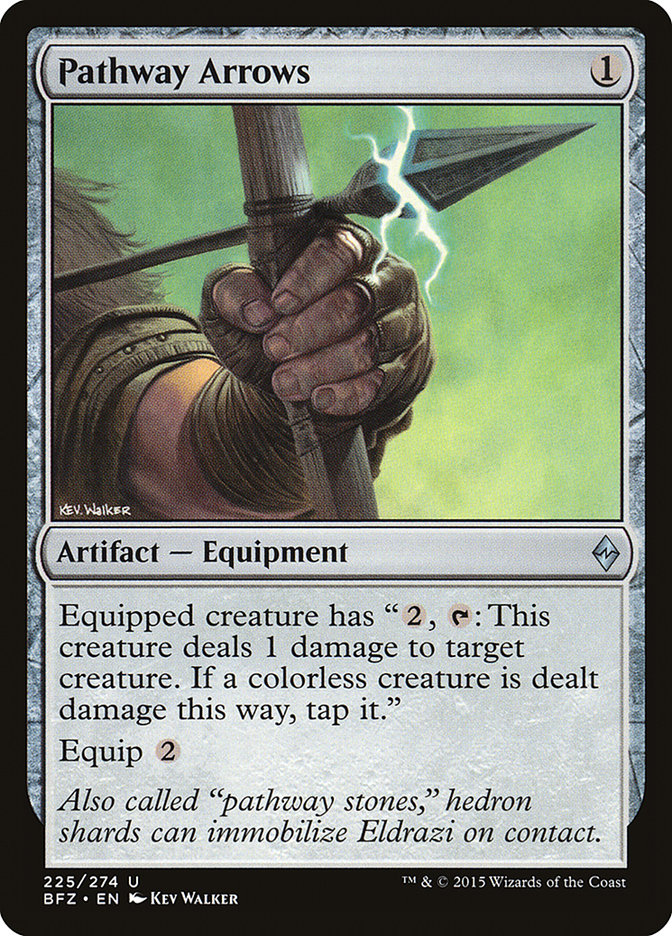You ever see a sixth pick Drana’s Emissary in Pack 3, shake your head, and wonder why you’re never the person getting that type of hook-up?
I think the last time I did Limited content was for Scars of Mirrodin. That format was very successful for me, and Battle for Zendikar is
no different.
First, my pedigree. Most of you likely know me as a Constructed guy. I don’t draft on Magic Online, and I typically don’t book flights to Sealed Grand
Prix. However, of my nine Grand Prix Top 8s, six of them are Limited. I don’t mean to boast, but I do think it’s important to know who you’re taking advice
from, and this tends to be a lesser known fact about me — When I care, I’m also reasonable at figuring out Limited formats. Due to my recent focus on
doing well at the Pro Tour level, I had to re-up my Limited game. So far, I’ve gone 5-1, 5-1, and 5-1 in my last three high level Draft tournaments.
Battle for Zendikar
was interesting to me right off the bat due to the focus on synergies. As a person who genuinely enjoys Constructed, these types of formats are the ones
that appeal to me the most, and consequently, the ones that are the toughest to figure out.
In order to explain how I’ve found success in this format, first I need to explain how I draft most formats.
Drafting
In the first few picks, you don’t have colors. It’s easy to first pick a bomb rare and want to end up playing that card and that color. Clearly you want to
play your best cards, but it’s not in your best interest to get needlessly attached.
By taking cards of one color, you’re not “staying open,” you’re actually limiting your options. If you figure out late that black is open on your right,
you’ve probably already passed some reasonable black to your left, so it may be too late. You’ll get cut in pack 2 and end up with eight or so playable
black cards at the end.
By trying to “stay open,” you’re effectively saying “I’m going to take a weaker card here because I will likely get to play with it, and if I end up short
on playables, it’s a disaster.” In this modern era, when was the last time you ended up short on playables? It just doesn’t happen anymore. Most of the
cards are playable and you’ll have 42 cards after the draft! There’s basically no way you miss. In a format based on synergy, there’s a chance you don’t
end up with 22-23 perfect cards for your deck, but that’s likely to happen anyway, especially if you’re trying to solidify yourself in a color that isn’t
open.
For the first five picks or so, I’m content with taking the most powerful card out of each pack, waiting for a clear signal to show up. If, at the end of a
draft, you’ve taken great cards and only passed medium to good ones, I like your chances. What you want to be doing is positioning yourself to be rewarded
when you do find what’s open.
Battle For Zendikar Specifics
Drafting isn’t just about making some picks, selecting your colors, and hoping you open some bombs; you want to be drafting around synergy. So much of the
power level in these cards is tied up in how they interact with other cards in the format, so you should want to be leveraging that as much as possible.
Draft a deck that’s coherent, has synergy, and let that power carry you through the draft.
Some archetypes are better than others, but you’ll often end up with a better deck if you can slide into the open archetype. You can certainly find success
without dipping into a specific archetype just by taking the best cards in a vacuum. A deck full of Cloud Mantas, Eldrazi Skyspawners, and Clutch of
Currents is probably going to be very good, but those decks don’t come together very often. U/W Fliers is an archetype that mimics this principle and isn’t
necessarily looking for anything specific. If you don’t know how to draft any of the archetypes, fighting for a more normalized deck might be your style.
Signaling
Reading signals is tricky, as your card evaluations likely differ from your neighbors. For example, I might interpret a third pick Serene Steward as a sign
the W/B Lifegain deck is open, but it’s possible they took an enabler over the payoff card, the pack was heavy with exceptional white cards, or they don’t
know that the card is busted.
Most of the time, proceed with caution.
Pivoting
When employing my draft strategy, I’m often looking for ways to protect myself in case things go wrong. In those spots, I’m trying to take cards that
overlap into another archetype, that way I can pivot if necessary without having to start drafting a new deck from zero playable cards that go in that
deck.
For example, if I pick up some early Kalastria Healers and am looking to be in the W/B Lifegain deck, I might pick up a late Tajaru Beastmaster and slide
into the go-wide G/W Allies decks, possibly splashing the Healers and playing things like Tajaru Stalwart.
Another example would be if you’re drafting G/R Landfall, but end up wheeling some converge cards. It might be wise to pick up those cards and take fixing
a little more aggressively.
Forcing
This strategy is also fine. If you’re unfamiliar with a format, it may be wise to force a deck you know you’ll draft and play the best. That may yield
higher dividends than trying to read the table. I don’t recommend it in general, but not all of us have infinite time to spend practicing, so you may need
to figure out a strategy that works best for you.
Undervalued Cards
Most of these cards are all-stars in their respective archetypes, and the fact that they are underrated is something you should be using to your advantage.
This is at its best in the G/R Landfall deck, but is playable in other spots. I’ve used it, especially in conjunction with Looming Spires and Makindi
Sliderunner, to great effect. In Landfall, Slab Hammer allows you to always trigger landfall, which is great. However, it also means that you’re probably
going to stop at five or six mana, which may be not so good depending on what the rest of your deck is. You certainly don’t want to lock yourself out of
playing your bigger spells, so use it carefully.
While it’s not devoid, it is colorless, so it’s useful alongside things like Kozilek’s Sentinel and Molten Nursery. It’s also quite good on a flier.
Both Allies and W/B Lifegain are great, and this is basically the best card in both archetypes, yet it’s not uncommon to see them late, even in Pack 1.
It’s archetype specific, which is why I think people are passing it, but it’s probably the best pivot in the format.
This card is probably the reason why green is so underrated. It doesn’t look like much, but it does what most green decks want you to do, which is go wide.
Tajaru Warcaller is the best green card, but Tajaru Beastmaster is a fine replacement. Several of my successful green decks have played two copies.
Plated Crusher is the best Eldrazi. It has a reasonable casting cost, evasion, and is tough to kill. It’s kind of like Pelakka Wurm in Rise of the Eldrazi, except it doesn’t look very appealing. Early on in a draft, I won’t snap it off because I generally expect it to come back.
This is likely my favorite card to open or get passed. It’s splashable and is one of the best cards in the set. Not only does it provide that lategame
Overrun push, but in the meantime, it provides the bodies. It’s also busted with any sort of Ally trigger.
Ari Lax wrote about this on Monday
, so I won’t dwell on it too much. I will add that Seek the Wilds also goes a long way toward letting you shave lands and get a bunch of velocity. I’ve had
a few decks that curve up to six but play sixteen land and rarely flood in the lategame. It’s not quite as busted as having a deck with Ponder and
Preordain, but it feels close, at least for a Limited power level.
With that kind of filtering, playing four colors isn’t out of the question. Converge and Allies both love it.
It can be tough for black to reap the rewards of processing, but that’s probably because you’re not taking Sludge Crawler high enough. If you’re on the
play, this thing is getting in there; and if you’re on the draw, you’re still pretty likely to get a hit in. In the lategame, Sludge Crawler is likely
going to be The Abyss.
I’ve had decks that were a little short on playables and ended up playing Salvage Drone, which is also fine. When you do end up with a scrappy deck
featuring a bunch of one-drops, I like Spell Shrivel a lot more since it keeps the board clear and helps your little guys keep getting in there. Add in
some Murk Striders and Swarm Surges and it’s all over.
Eldrazi Spyspawner and Clutch of Currents are the two best blue commons, but Mist Intruder is what I’m really hoping to get passed. It’s better than
Benthic Infiltrator and it’s better than Murk Strider and all the other payoff cards.
It’s worth noting that Mist Intruder doesn’t provide a quick clock and it’s often a bad topdeck, but there are ways to mitigate that. If you value cards
like Murk Strider and Adverse Conditions high enough, you should be able to tempo out your opponent, even with mediocre Storm Crow beats. Swarm Surge is
another huge player here, as it allows you to win a tight race.
The other option is simply playing fewer land. I’ve played as low as sixteen in my blue Devoid decks, just because the overall card quality from each
individual card is so low when your deck isn’t functioning. For example, a five-land hand with a Mist Intruder might be something you have to mulligan
(unless you have plenty of payoff cards, which makes the Mist Intruder worth more than a card).
Basically, you don’t want to flood out when your cards aren’t going to trade straight up for their cards.
When drafting W/B Lifegain, you’ll often end up with multiple copies of Nirkana Assassin and Stone Haven Medic, meaning that you’ll often have a deathtouch
creature on offense or defense. Did you know that Pathway Arrows allows the creature to deal the damage, not the Pathway Arrows itself? In W/B Lifegain,
Pathway Arrows is a very solid pickup.
I’m not a huge fan of it as a sideboard card, but when I’m drafting W/B, I often want a copy.
Payoffs or Enablers?
The theory is that if you’re the person with all the payoff cards, eventually the enablers will float to you because no one will want them. However, I
think the opposite is a more true fact. If people don’t have the enablers, they can’t take the payoff cards. I will aggressively take things like Mist
Intruder over Ulamog’s Nullifiers because the ingesters are more important.
There are far more payoffs than enablers in the set anyway, and I value them as such.
Play or Draw?
It’s closer than you think. If all you’re trying to do is assemble a bunch of small combos, then drawing first might be correct. I’ve found that aggressive
starts are pretty easy to get brick-walled in this format due to the large amount of toughness in the set, so playing first generally yields no advantage.
Having played the format a bunch, I regularly draft decks that prefer to be on the draw.
Removal (and When to Use It)
I’m not a huge removal fan in this format. There are decks where I’ll have ten removal spells, some awaken spells, big threats, and choose to draw first,
but most of the time, I only want 2-3 removal spells in my deck.
There are very few things worth killing, as almost everything else can be invalided in combat. I don’t mind a higher number of removal spells if they’re
Touch of the Void or Complete Disregard because those help jump-start my engine at times.
I’m mostly scared of the utility creatures that don’t get involved in combat, so I typically stay away from things like Gideon’s Reproach. Other than that,
I’m worried about big things and people going wide, so Boiling Earth and Smite the Monstrous are great pickups for me. I like having some way to interact
with whatever my opponent is doing.
Since I’m only worried about specific creatures, I’ll often take a couple hits from a Grizzly Bear before trying to lock it down with a Vestige of Emrakul
or something. I’d rather take four damage than lose to a flier or Kalastria Healer later on.
Using your removal against the Devoid decks is an interesting thought experiment. In theory, if they never hit you with an ingester, their deck likely
doesn’t work. They’ll have things like Murk Strider that are terrible bodies, so pointing Touch of the Void at Mist Intruder might seem like a good plan. I
think it varies game to game, and it certainly varies based on what you’ve seen from them. If they have a bunch of Spell Shrivels and Touch of the Voids,
you’re probably not going to be able to keep them off processing something at some point.
It also matters how much the removal matters. Are you more scared of their Processors working, or something like Nettle Drone? If you kill their Mist
Intruder, what’s the likelihood of them following it up with something like Benthic Infiltrator?
Combat Tricks
Similarly to removal, I’m not a huge fan of combat tricks. Overall, basic creature combat isn’t as prevalent here as in other formats, such as Magic Origins. Lithomancer’s Focus reads similarly to Enshrouding Mists, which was one of the best cards in that format, but I would basically
never maindeck that card unless I was hyper aggressive and needed to punch through the various X/4s in the format.
I do like combat tricks out of the sideboard against aggressive decks though. Lithomancer’s Focus might allow you to slow down their aggression by giving
you a turn where you cast two spells, which should help you turn the corner. Tandem Tactics is another reasonable card against hyper aggressive decks, but
it depends on their sizing. If you’re playing against Landfall or a red Devoid aggro deck, it’s unlikely that Tandem Tactics will allow your smaller
creatures to trade profitably with theirs.
Sideboarding
I sideboard a lot. I draft sideboard cards aggressively, and I’m very conscious during a draft of which types of matchups I’m going to need help in. It’s
not uncommon for me to change upwards of eight to ten cards in a matchup. Sometimes it’s because I’m cutting a splash because they’re too aggressive, or
adding a splash that will allow me to go toe-to-toe with them in a longer game.
Best Archetypes
W/B Lifegain
As with most archetypes, there are different variations of this archetype. A controlling build is more likely, but I’ve seen some aggressive builds with
lots of Kor Castigators, Serene Stewards, and Bloodbond Vampires that apply pressure.
Generally, your deck is going to be a slow burn with a top end of Emeria Shepherd or a powerful Eldrazi like Breaker of Armies or Bane of Bala Ged.
Grixis Devoid
This is either U/B, B/R, or R/U, although sometimes you’ll end up with a splash. Most of the time, I’m looking for ingest synergies, but sometimes you end
up playing a more traditional beatdown or control deck. Of these, I like B/R the best, but all three archetypes are deep.
Non-Obvious Archetypes
G/B Lifegain
G/B itself is kind of a mystery. In theory, you’re supposed to be taking Catacomb Sifter and killing stuff with Bone Splinters. That will likely yield a
deck with some sacrifice synergies, but not a ton of power. I think G/B is the archetype that has a sub-theme of sacrificing stuff, but it requires
figuring out what your sub-archetype is going to be. Sometimes it’s going wide with Overrun effects, sometimes it’s Swarm Surge, and sometimes it’s
lifegain.
It’s unlikely that you end up having a true G/B Lifegain deck, but it’s not uncommon for there to be a mini-lifegain theme in your deck. Jaddi Offshoot and
Retreat to Kazandu are reasonable cards, and those mean that Nirkana Assassin and Kalastria Nightwatch are now playable in your deck. Pathway Arrows can
get some work done here as well.
This deck is pretty straightforward, it’s what the color combination wants you to be doing, yet people tend to avoid it. You want things that make tokens
and things that pump your tokens. If you were pivoting during the draft, you might end up with some Kalastria Healers that make for a reasonable splash.
Since you’re drafting tokens, you might have a Unified Front or two. That gives you a couple different ways to combo kill your opponents.
In these decks, I don’t like removal — I like ways to win races. Lantern Scout, Kalastria Healer, and Encircling Fissure are all excellent, because
eventually you’re going to attack for 30. Nothing that they’re doing really matters. On top of that, this deck runs on having a critical mass of creatures,
so if you’re drawing things like Gideon’s Reproach or Lithomancer’s Focus that don’t really add to the board, you’re coming up a few points short.
G/R Scions
I’ve only seen this come together a couple times. Basically, the red devoid cards have to be flowing and you supplement that with Eyeless Watchers, Tajaru
Beastmasters, and Outnumbers. Kozilek’s Sentinel, Nettle Drone, and Vile Aggregate are awesome here, as usual. It’s worth noting that Unnatural Aggression
actually works quite well with the red devoid creatures that are abnormally big.
It’s difficult for me to provide complete information for how I’ve been doing things, but hopefully this helps form a clearer a picture in combination with
things you already knew. If there’s something I didn’t touch on or you’d like some more information about, ask away.
I’ll see everyone at #GPAtlanta — It should be fun!


